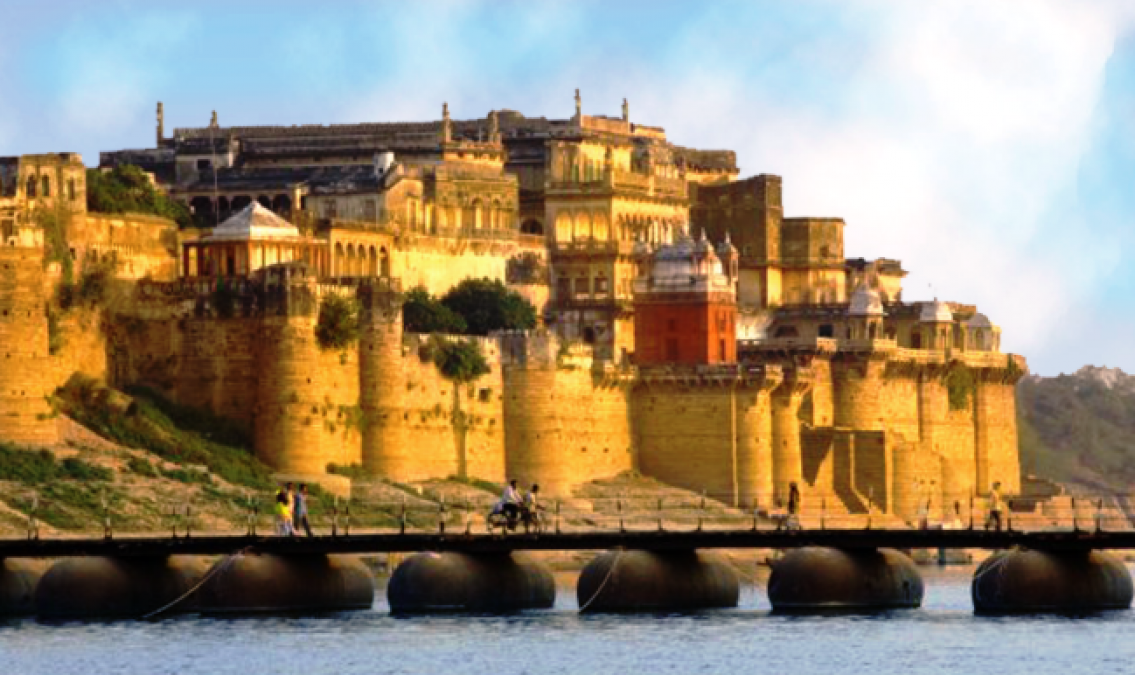
Varanasi, often referred to as the spiritual capital of India, is a city that has captivated travelers for centuries. Nestled on the banks of the sacred River Ganges in the state of Uttar Pradesh, Varanasi is steeped in history, culture, and religious significance. This ancient city, believed to be more than 3,000 years old, offers a glimpse into the vibrant tapestry of Indian civilization. In this article, we will take you on a journey through the top 10 places to visit in Varanasi, delving into their historical significance and enchanting allure.
Dashashwamedh Ghat:
Dashashwamedh Ghat is one of the most famous and ancient riverfront steps in Varanasi. According to Hindu mythology, Lord Brahma performed a grand ritual of sacrifice (yajna) here, hence the name Dashashwamedh, meaning "the place of ten horse sacrifices." It is believed that a visit to this ghat absolves one of their sins. Every evening, the ghat comes alive with the mesmerizing Ganga Aarti, a devotional ceremony where priests offer prayers to the river.
Kashi Vishwanath Temple:
Kashi Vishwanath Temple, also known as the Golden Temple, is one of the most revered Hindu temples in India. Dedicated to Lord Shiva, the presiding deity of Varanasi, it holds immense spiritual significance. The temple has been destroyed and rebuilt several times throughout history, with the current structure dating back to the 18th century. The intricate architecture and the spiritual aura of the temple make it a must-visit for devotees and architecture enthusiasts alike.
Sarnath:
Located just a few kilometers away from Varanasi, Sarnath holds immense historical and religious significance. It is the place where Lord Buddha gave his first sermon after attaining enlightenment. Sarnath is home to several ancient Buddhist stupas, monasteries, and a museum that showcases a remarkable collection of Buddhist art and relics. The Dhamek Stupa, which marks the spot where Buddha delivered his sermon, is a prominent attraction.
Manikarnika Ghat:
Manikarnika Ghat, also known as the "Burning Ghat," is one of the oldest and most sacred cremation grounds in Varanasi. Hindus believe that cremation at this ghat liberates the soul from the cycle of birth and death. Witnessing the cremation rituals and the eternal flame burning at Manikarnika Ghat can be a profound and introspective experience.
Ramnagar Fort:
Situated on the eastern bank of the Ganges River, Ramnagar Fort is a majestic structure that served as the residence of the royal family of Varanasi. Built-in the 18th century, the fort showcases a blend of Mughal and Hindu architectural styles. It houses a museum that displays a vast collection of vintage cars, royal artifacts, and manuscripts. The fort also hosts the world-famous Ramnagar Ramlila, a grand reenactment of the Hindu epic Ramayana during the festival of Navaratri.

Assi Ghat:
Assi Ghat is a lively and vibrant ghat where pilgrims and locals gather to take holy dips in the Ganges River. It is believed that the river at Assi Ghat is an amalgamation of the mythical rivers Assi and Varuna. The ghat offers a serene ambiance and is an ideal spot to witness the beauty of sunrise and sunset while enjoying a boat ride or participating in yoga and meditation sessions.
Bharat Kala Bhavan:
Bharat Kala Bhavan is a prestigious museum situated within the premises of Banaras Hindu University. It houses an extensive collection of ancient sculptures, paintings, textiles, and archaeological artifacts that showcase the rich cultural heritage of Varanasi and other parts of India. The museum is a treasure trove for history enthusiasts and art connoisseurs.
Chunar Fort:
Located approximately 40 kilometers from Varanasi, Chunar Fort stands as a testament to the region's turbulent past. Built-in the 11th century, this ancient fort has witnessed the reigns of various dynasties, including the Mauryas, Guptas, and Mughals. The fort offers panoramic views of the Ganges River and is known for its architectural grandeur and historical significance.
Tulsi Manas Temple:
Tulsi Manas Temple is dedicated to Lord Rama and is located at the place where the saint-poet Goswami Tulsidas composed the epic Ramcharitmanas. The temple is adorned with exquisite marble carvings that depict scenes from the Ramayana. It serves as a spiritual and cultural center, attracting devotees and admirers of Hindi literature from around the world.
Alamgir Mosque:
The Alamgir Mosque, also known as Beni Madhav Ka Darera, is an architectural marvel that showcases a fusion of Hindu and Mughal styles. Constructed by Emperor Aurangzeb on the site of the original Vishnu temple, the mosque offers a panoramic view of the Ganges River and the city of Varanasi. It's intricate artwork and delicate carvings make it a significant landmark in the city's historical landscape.
Varanasi, with its timeless charm and deep-rooted spirituality, continues to draw pilgrims, historians, and seekers of enlightenment from all corners of the globe. The top 10 places mentioned above provide a glimpse into the city's rich history, cultural heritage, and religious significance. From the sacred riverfront ghats to the ancient temples and historical landmarks, Varanasi offers a unique and transformative experience for all who venture there.